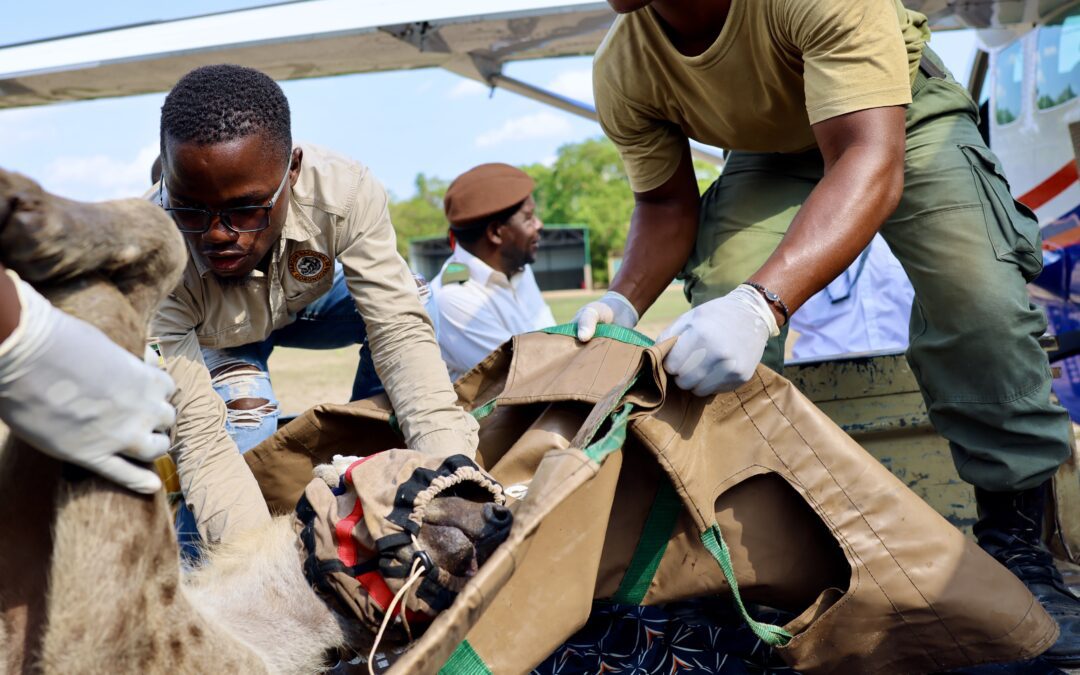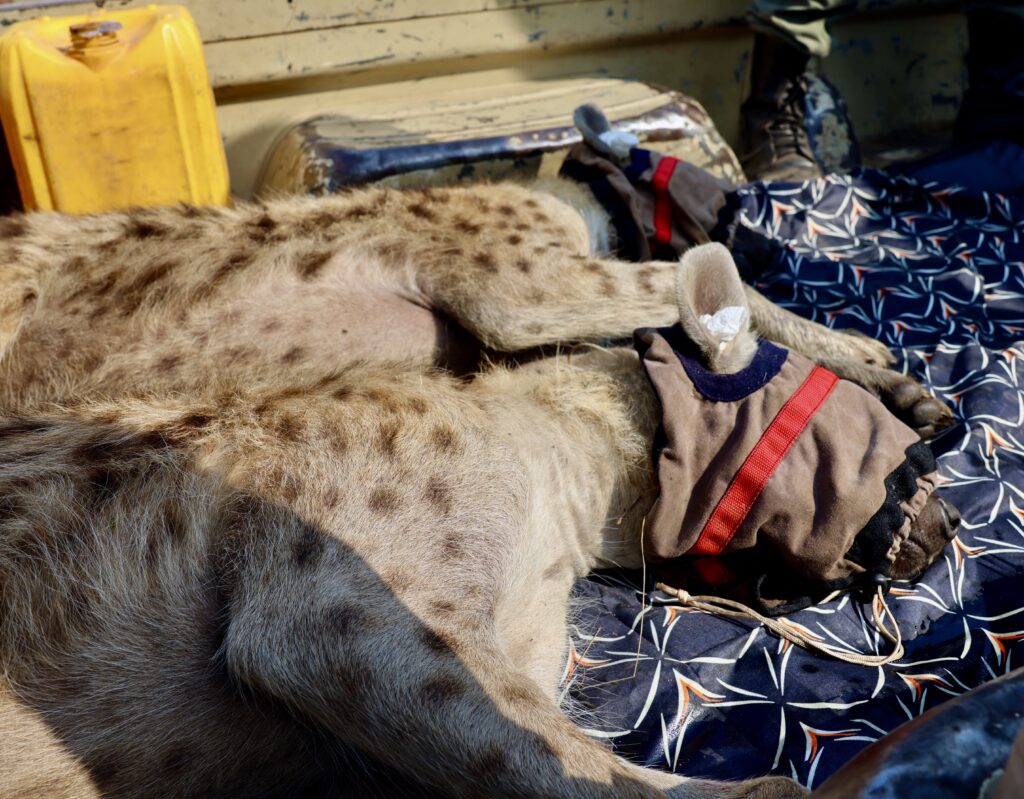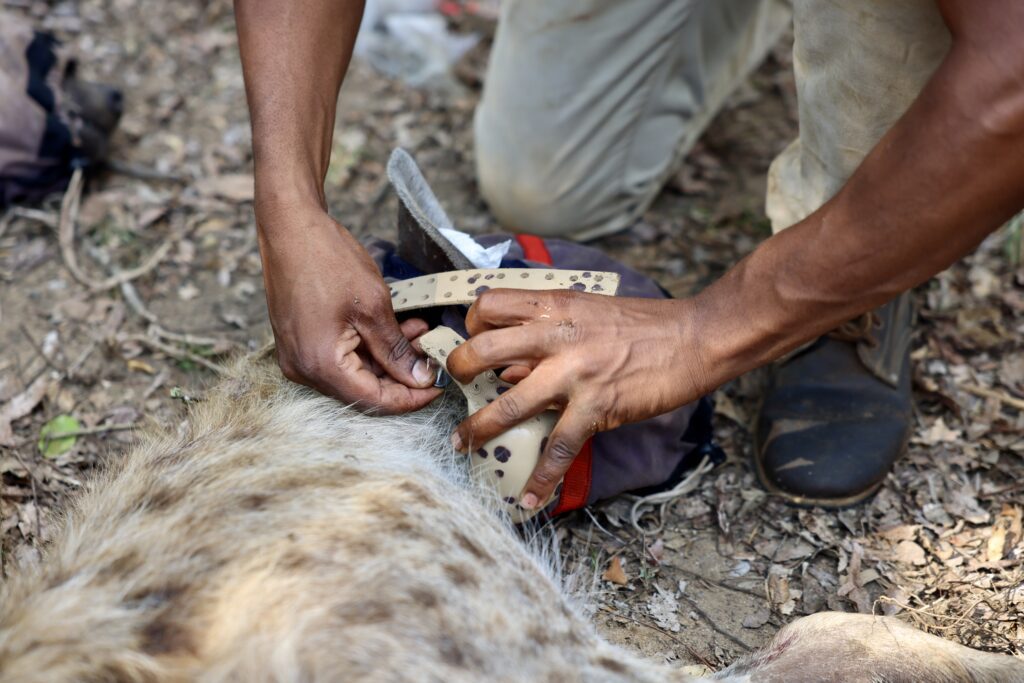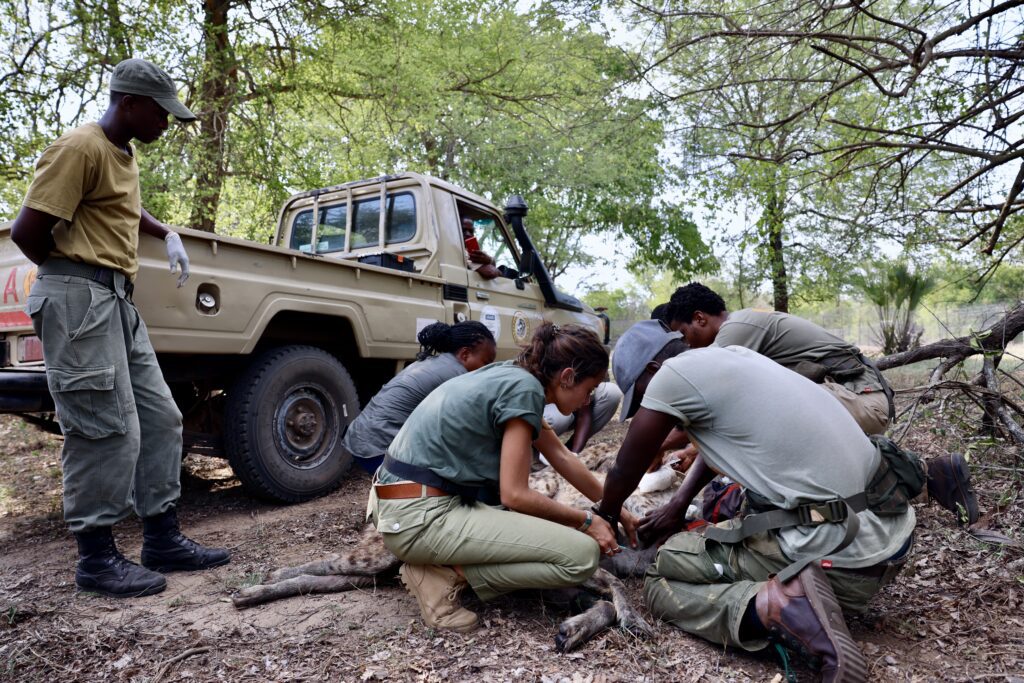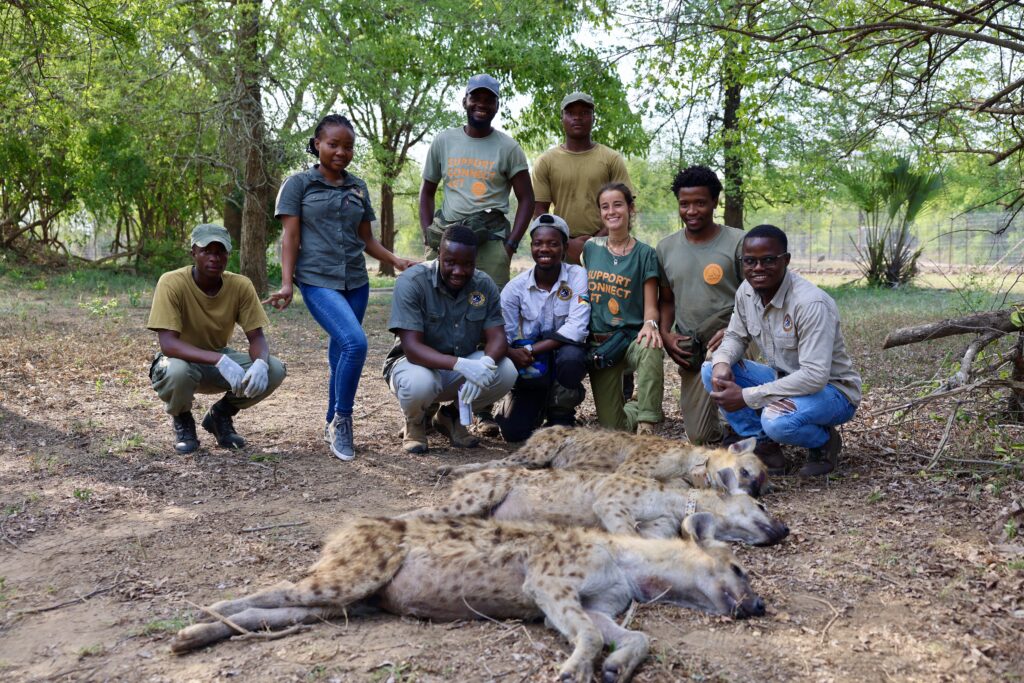With 15 reintroduced since 2022, hyenas are transforming the Gorongosa ecology—helping to protect water quality, controlling populations and supporting biodiversity.
Text/photos – Janado Nazare Cher
Gorongosa National Park received three more hyenas from the Karingani Game Reserve Tuesday afternoon (November 12)—one male and two females.
A total of 15 hyenas have been reintroduced since the project began in July 2022.
Hyenas play an important role in the park’s ecology. By feeding on carcasses, they speed up decomposition, preventing water contamination and the multiplication of insects that thrive on the decaying meat. They also help control the animal population as they prey on other carnivores, forcing them to hunt again.
Relocating wildlife restores populations, controls overpopulation, and preserves genetic diversity. Moving animals from one location to another is a well-planned event and involves conservation organizations, governments, and local communities – all working together to protect animals and people.
After the necessary permits were granted, Karingani veterinarians assessed each animal’s health, sedated them for the journey and monitored vital signs and stress levels along the way.
Once the hyenas arrived at the park, Gorongosa veterinarians checked the animals again, vaccinated and released them into a fenced boma to adapt to their new surroundings.
Several hyenas received a GPS collar for tracking their health and movement. Known for their complex social structures, hyenas sometimes struggle when becoming a part of a new pack. Monitoring helps ensure the integration is successful and long-term, gives researchers insight into the hyena’s ecological effects on their new home.
The arrival of the new hyenas thrilled everyone who came to see the wild predators, as yet another hope was rekindled for the great Gorongosa Restoration project.
Project partners include the Mozambique Wildlife Alliance for logistical and veterinary support, and Karingani Game Reserve for providing the hyenas.
